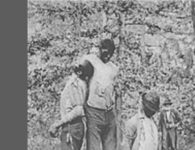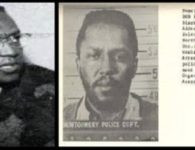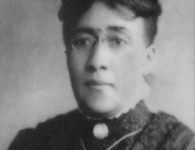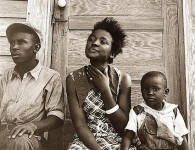Original article found at: Duke University Medical Library
Folk medicine is a combination of traditional healing concepts and methods used in past cultures of people who believed that they had special healing powers. The practices listed below was used to cure diseases and promote emotional and physical healing. The practice of medicine is usually passed down from generation to generation by word of mouth. Many black people used this method because traditional medical support was not made available to them.
SPANISH MOSS (Also referred to as Crape-moss and Old man’s beard)
When boiled, the concoction is used to bathe swellings and also relieve pains associated with rheumatism. Boiled (when green) – drink the “tea” for easy delivery at childbirth. It increases the flow of mother’s milk, assists in promoting the delivery of the “afterbirth.” The moss should be taken twice daily to “clean out” after giving birth. When green, it can be put in shoes to lower blood pressure. When it is crushed it can be applied to hemorrhoids, and if tied around the neck, it was believed to relieve the pain from a sprained neck.
Drinking
To break a husband from drinking, skin a live eel, put the skin in some liquor and give it to him. It is said he will never drink again.
Chicken-pox
Go into a chicken house and let the chickens fly over you, or simply push the patient backward into the henhouse.
Chills and Fever
Cut a notch in a piece of wood for every chill you have had, blow on it, and throw it into a running stream where you never expect to pass again. Go home without looking back, and you will have no more chills.
Typhoid
Typhoid fever may be cured by taking a bath in steeped peach leaves, while a young black chicken is split open and applied bloody and hot to the chest.
Backache
Let a child who has never seen his father, or is a seventh daughter, walk across your back.
Toothache
Pick an aching tooth with a splinter (from the north side of a pine tree that has been struck by lightning) and throw the sliver into running water.
Hic-coughs
May be cured by holding the breath and taking nine swallows of water. Nine grains of pepper for nine mornings or nine shots held in the mouth are equally effective.
Sore Throat
A sock that had been worn all day by the sick person must be tired around the throat with the sole of the sock turned towards the skin. Some believe that salt or warm ashes should be put into the stocking and some insist upon using a dark stocking.
Earache
To cure an earache the head off a wood beetle was cut off and a drop of blood from the head was put into the aching ear. For similar results, hair from a young girl was also placed in the aching ear.
WOODLICE
Woodlice was to be sewn “live woodlice” into a pouch and hung around a baby’s neck to relieve pain and fever associated with “teething”. When the woodlice die, the teeth were supposed to have erupted through the gums. The method was mainly used in the rural south. The “woodlouse” is the Porcellio scaber. It should not be confused with white ants or termites.
Cayenne Pepper
Mix cayenne pepper with aloe juice and rub over sore muscles or arthritic joints. Also used for bee stings.
Black Dog
Grease, stewed from a black dog was a cure used for rheumatism, though some people believe it should be put on” in the dark of the moon” to be most effective.
RATTLESNAKE SKIN
A snake skin, especially the skin of a rattlesnake, dried and tied around the wrist or leg was used for rheumatism. Worn around the waist, it was to prolong life. The flexibility of the snake may have been the quality which first suggested its use to cure stiffness.
GARLIC
Used to regulate blood pressure and relieve cramps. Crush one clove of garlic in a glass of hot milk and drink quickly.
Read the original article at:
http://guides.mclibrary.duke.edu/blackhistorymonth





















No comments